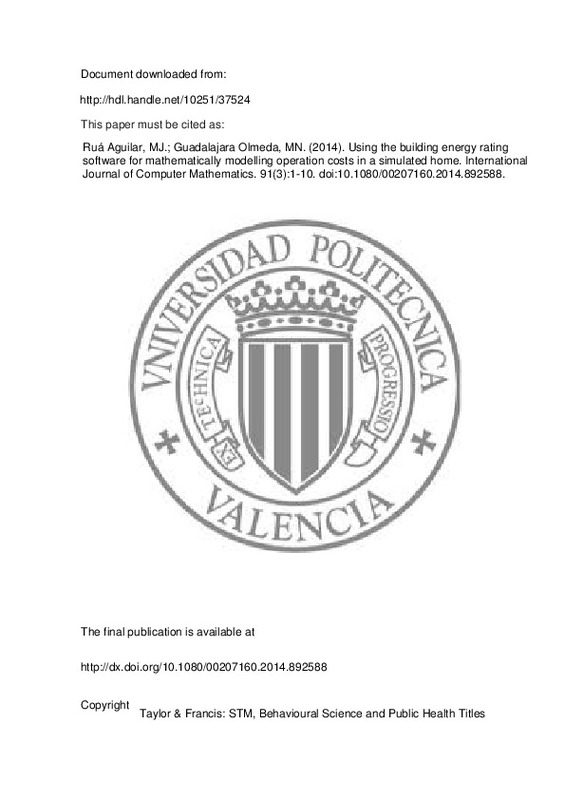Amecke, H. (2012). The impact of energy performance certificates: A survey of German home owners. Energy Policy, 46, 4-14. doi:10.1016/j.enpol.2012.01.064
Audenaert, A., De Boeck, L., & Roelants, K. (2010). Economic analysis of the profitability of energy-saving architectural measures for the achievement of the EPB-standard. Energy, 35(7), 2965-2971. doi:10.1016/j.energy.2010.03.031
Davies, H., & Wyatt, D. (2004). Appropriate use of the ISO 15686-1 factor method for durability and service life prediction. Building Research & Information, 32(6), 552-553. doi:10.1080/0961321042000291938
[+]
Amecke, H. (2012). The impact of energy performance certificates: A survey of German home owners. Energy Policy, 46, 4-14. doi:10.1016/j.enpol.2012.01.064
Audenaert, A., De Boeck, L., & Roelants, K. (2010). Economic analysis of the profitability of energy-saving architectural measures for the achievement of the EPB-standard. Energy, 35(7), 2965-2971. doi:10.1016/j.energy.2010.03.031
Davies, H., & Wyatt, D. (2004). Appropriate use of the ISO 15686-1 factor method for durability and service life prediction. Building Research & Information, 32(6), 552-553. doi:10.1080/0961321042000291938
Gram-Hanssen, K., Bartiaux, F., Michael Jensen, O., & Cantaert, M. (2007). Do homeowners use energy labels? A comparison between Denmark and Belgium. Energy Policy, 35(5), 2879-2888. doi:10.1016/j.enpol.2006.10.017
Johnstone, I. M. (2001). Energy and mass flows of housing: a model and example. Building and Environment, 36(1), 27-41. doi:10.1016/s0360-1323(99)00065-7
Johnstone, I. M. (2001). Energy and mass flows of housing: estimating mortality. Building and Environment, 36(1), 43-51. doi:10.1016/s0360-1323(99)00066-9
La Roche, P. (2010). Cálculo de emisiones de gases de efecto invernadero en edificios: análisis del funcionamiento de varias herramientas en diferentes climas. Informes de la Construcción, 62(517), 61-80. doi:10.3989/ic.09.026
Majcen, D., Itard, L. C. M., & Visscher, H. (2013). Theoretical vs. actual energy consumption of labelled dwellings in the Netherlands: Discrepancies and policy implications. Energy Policy, 54, 125-136. doi:10.1016/j.enpol.2012.11.008
Pérez-Lombard, L., Ortiz, J., González, R., & Maestre, I. R. (2009). A review of benchmarking, rating and labelling concepts within the framework of building energy certification schemes. Energy and Buildings, 41(3), 272-278. doi:10.1016/j.enbuild.2008.10.004
González, A. B. R., Díaz, J. J. V., Caamaño, A. J., & Wilby, M. R. (2011). Towards a universal energy efficiency index for buildings. Energy and Buildings, 43(4), 980-987. doi:10.1016/j.enbuild.2010.12.023
Rudbeck, C. (2002). Service life of building envelope components: making it operational in economical assessment. Construction and Building Materials, 16(2), 83-89. doi:10.1016/s0950-0618(02)00003-x
[-]







![[Cerrado]](/themes/UPV/images/candado.png)


